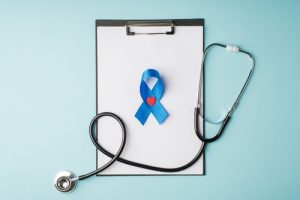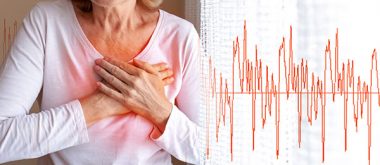Approximately 13 out of every 100 men in the United States is diagnosed with prostate cancer during their lifetime.
Although the cause is definitively unknown, smoking, alcohol abuse, obesity, family history, age, and race are all contributing factors that can impact the health and functionality of the prostate gland, a specialized organ with unique secretory cells which rests under the bladder, and increase the risk of prostate cancer.
Though treatable in some cases, recently, certain types of prostate cancer treatment approaches have been correlated with a significant increase in the risk of cardiovascular disease onset, especially in older men with preexisting heart conditions. This added risk for cardiovascular disease, on top of a cancer diagnosis has been found to greatly increase the risk of death in cases.
Common Prostate Cancer Treatment Methods
There are a handful of different types of prostate cancer that vary depending on which type of cell the cancer originated in. Depending on the type of prostate cancer, the stage of the disease, and the patient’s age and health status, oncologists may recommend a variety of prostate cancer treatment methods. Some of the most common current therapies that are administered include the following:
- Hormonal therapy: also referred to as androgen deprivation therapy, or ADT, is used to reduce the levels of male hormones in the body which typically act as a fuel, which perpetuates prostate cancer cell growth and spread. Hormone therapy is typically used in cases where surgery or radiation are not possible, in combination with other treatment options, or a precursor to radiation in an attempt to shrink cancer spread.
- Immunotherapy: these are drugs which are administered to support and further stimulate the body’s natural immune system to identify and destroy foreign cancer cells within the body more effectively.
- Radiation therapy: either external high-energy rays or brachytherapy using radioactive seeds are implanted near the tumor for a variety of uses including early treatment, treatment for reoccurring growth, or to suppress spread in order to relieve symptoms.
- Radiopharmaceuticals: involves the use of radioactive drugs that are administered to target and kill cancer cells.
- Targeted therapy: these treatments interfere in cancer cell division and a variety of targeted therapy approaches can work uniquely to change the way the cancer cells grow, repair and interact with other cells.
- Chemotherapy: which involves administration of anti-cancer drugs given intravenously or orally to kill cancer cells, is used in severe cases when the cancer has spread beyond the prostate gland and prior therapy approaches ail to work.
- Surgery: a common choice to cure a patient of prostate cancer that remains isolated in the prostate. This approach typically includes a radical prostatectomy which is the removal of the entire prostate gland, as well as surrounding tissue and seminal vesicles.
The Prostate-Heart Connection

The prostate secretes several enzymes and hormones naturally, thus the processes of administering treatment which impacts this function can have larger-scale effects. Studies have found that, while it does help in the treatment of prostate cancer, androgen deprivation therapy affects the heart and blood vessels, as well as the entire body with a plethora of side effects, for example, ADT has been found to raise cholesterol and blood sugar levels, increase body fat and thickness of blood vessel walls, and reduce muscle mass and the body’s ability to process sugar.
Additionally, forced fluctuations in male hormones can affect testosterone, which impacts arterial relaxation and bloodstream lipid levels, and androgen inhibition may promote inflammatory responses as well as blood clot formation. In addition, decreased serum cortisol can generate a compensatory rise of other steroids resulting in fluid retention, hypertension, and low potassium.
Prostate Cancer Treatment and Patients’ Options
Each kind of prostate cancer treatment involves a variety of risks, and many people are already aware of the challenges posed by strong drugs, radiation therapy, and surgery. The contradiction with androgen deprivation therapy is that while useful as a highly effective treatment, it also presents a potential danger. In fact, the American Heart Association, American Cancer Society, and American Urological Association with the American Society for Radiation Oncology, have all collaborated in publishing an announcement detailing the issues as well as their concern on the subject.
An oncology healthcare team’s job is to individualize prostate cancer treatment for each patient by exploring the complete health profile and keeping abreast of current statistics. The patient’s job is to communicate openly while focusing their efforts on maintaining health in whatever means they have control over.
- Proactive approaches to aiding in immune and overall health and reducing the risk of prostate cancer in the first place include the following:
- Consistency in adhering to guidelines supporting general good health
- Eating a balanced low-fat, low-salt, nutrient-dense diet
- Staying properly hydrated
- Getting adequate rest
- Maintaining a healthy weight and participating in regular physical activity
- Regular exposure to natural light and fresh air
- Practicing stress-relieving activities such as gardening, sports, music, and being with pets
- Regular healthy socialization
- Reducing unhealthful indulgences including smoking and excessive alcohol intake
- Establishing a relationship with a trusted healthcare team who can guide you on medications, prescreening visits and regular check-ups.
The findings of this study, identifying a link between treatment options and heart disease risk, researchers confirm, underscores the importance of multidisciplinary care for cancer patients, like cardio-oncology, a field that combines cardiology and oncology.





